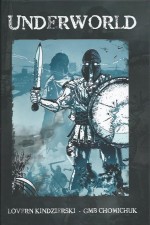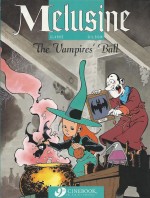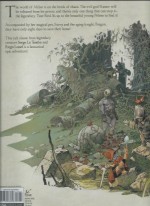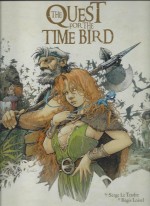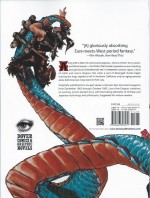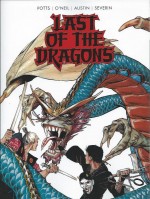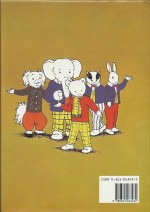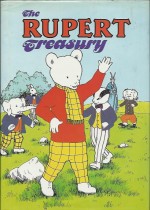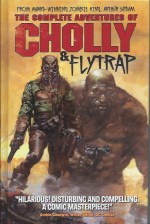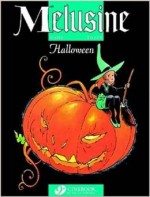In keeping with my self-imposed Holiday tradition here’s another selection of British Annuals selected not just for nostalgia’s sake but because it’s my house and my rules…
After decades when only American comics and memorabilia were considered collectable or worthy, the growing resurgence of interest in home-grown material means there’s lots more of this stuff available and if you’re lucky enough to stumble across a vintage volume, I hope my words can convince you to take a punt and step out of your comfort zone.
Topping my Xmas wish-list would be further collections from those fans and publishers who have begun to rescue this magical material from print limbo in (affordable) new collections…
Great writing and art is rotting in boxes and attics or the archives of publishing houses, when it needs to be back in the hands of readers once again. As the tastes of the reading public have never been broader and since a selective sampling of our popular heritage will always appeal to some part of the mass consumer base, let’s all continue rewarding publishers for their efforts and prove that there’s money to be made from these glorious examples of our communal childhood.
Whizzer and Chips Annual 1979

By various (Fleetway)
SBN: 85037-478-2 Â Â Â Â Â Â Â Â Â Â Â Â Â Â Â Â ASIN: B000IZ3DO2
British comics were always anthological. Even the few titles which notionally featured a solo lead like Doctor Who Weekly/Monthly or Hulk Comic carried a preponderance of ancillary series and serials. Most – whether Adventure or Humour, Pre-School or Juvenile and most importantly Boys or Girls – worked on the premise that variety was the spice of life and offered as many different characters and premises as they could cram into the page count.
That was never more ably demonstrated than in Fleetway/IPC’s ingenious comedy vehicle Whizzer and Chips which launched in October 1969 and ran – absorbing other flagging or failing kids’ humour titles – such as Knockout!, Krazy, Whoopee! and Scouse Mouse – until its own subsuming into valiant and venerable survivor Buster in October 1990, when the decline of mass-market children’s periodical publication really began to be felt.
Edited by Bob Paynter and lavishly packed with gag-features in IPC’s continual battle to steal market-share from DC Thomson’s unassailable Beano and Dandy, the first W&T appeared on Saturday 11th (dated the 18th; the off-sale date by when retailers had to have returned unsold copies for a refund/discount on the next issue), it’s innovative boast being “two comics for only sixpence†…and that’s in old money…
Chips was designed as a 16-page pull-out insert in the middle of Whizzer and the illusion was further fostered by the conceit that the graphic ranks of the “Whizz-kids†were deadly rivals of the “Chip-ites†eternally in their midst…
The comic was a splendid success, not because of the schizo-gimmick but because it was slickly professional and contained top-flight material by the company’s best comedy artists and writers; although arguably a toning down of the irreverent anarchy which predominated in earlier 1960s titles like Wham! and Pow! might have made parents a little happier to buy it too…
For a far more detailed discourse – on this and a host of other British comics – you should check out Lew Stringer’s glorious blog Blimey!… He’d also be able to tell you far more about the individual creators than I ever will, but as usual I’m going to have a bash anyway and apologize in advance for my inevitable errors and omissions.
As a hit weekly Whizzer and Chips naturally had end-of-year annuals from the earliest opportunity and this one (released at the end of 1978) was the ninth of 24, offering a wide range of old and new characters – just as you’d expect and want.
Behind that tantalising Mike Lacey cover the manic madness and mayhem begins with a delicious ‘Super Store Super Game’ (bring your own counters and dice, kids!) whilst ‘Lazy Bones’ (Colin Whittock) reveals how indolent young Bennie Bones attempts to skive off household chores again but only earned more work, after which Lacey’s ‘Sid’s Snake’ found serpentine Slippy getting into a tight spot he couldn’t slide out of.
Cliff Brown had the franchise for producing cartoon games and puzzles and begins here with the “mazing†‘Jailbreak!’ before ‘The Magic of Films’ (Dave Jenner?) found the possessor of an enchanted tome using a manifested action hero to beat a bully before ‘Sweet Tooth’ (Trevor Metcalfe) outwitted another rampaging brute after his sugary treats. Always tardy ‘Slowcoach’ then found the perfect excuse for missing school registration…
Cover-star ‘Sid’s Snake’ – or rather his human co-conspirator – was the leader of the Whizz-Kids faction. He would organise infiltrations and “raids†onto Chips pages when not getting into tight spots or showing off to worms as in this second one-page outing, whilst the ‘Happy Families’ (by Dick Millington) spent most of their time sparring and causing domestic disasters, unlike Tom Williams’ underage ‘Tiny Tycoon’ who here transforms a little funfair into a big deal skate rink before Leo Baxendale’s pugnacious nipper ‘Champ’ turns his competitive drive to mastering the pogo stick with agonising consequences for all…
‘Super Store!’ by Bob Hill was the magical multi-storey emporium where anything could be bought, such as ghosts to stock a haunted house whilst – continuing the strangely trippy tone – ‘The Drips’ (Michael T Green perhaps?) were sentient water droplets playing mind-games with a baffled homeowner and ‘Beat Your Neighbour’ (a survivor of the merger with Knockout) revealed the depths competing families would sink to in order to be the best – in this case in making their home safe…
Uppity little madam ‘Toffee Nose’ made life hell for poor old dad when she found the garden too grubby, after which ‘Sid’s Snake’ resurfaces to show off his pugilistic skills; no doubt to provoke boy boxer ‘Shiner’ – also by Lacey – who leads off the Chips section of this book by once again disappointing his mum and copping a black eye without fighting anybody…
‘Footsie the Clown’ began as a colour strip by Leo Baxendale on the back page of Wham! and was revived here in monochrome, still being weird at the circus (by an artist I don’t recognise). Next comes Mike Brown’s bombastic ‘Super Dad’ quashing more time-wasting kids’ pranks before hard-luck lad ‘Loser’ adds his own unique spin to Shakespeare and Norman Mansbridge’s ‘Fuss Pot’ shows the proper way to shovel snow…
Cliff Brown’s ‘Treasure Island Maze!’ segues into another – cosmetically cushioned – clash for ‘Shiner’ and farmyard frenzy for ‘Footsie the Clown’ and his faithless companion Wuff the Wonder Dog whilst Reg Parlett’s rival gangs ‘Smarty’s Toffs & Tatty’s Toughs’ again fought a class war that left everyone bedraggled, beaten and in need of a break…
Following Cliff Brown’s brow-knitting puzzle ‘Two Old Grannies are in Trouble’ a TV commercial director soon regrets asking the opinion of one little girl in ‘Here’s Fuss Pot – the fussiest girl of the lot!’ after which ‘Pete’s Pockets’ disgorge a wish-granting genie as ‘Lib an’ Archie and their Magic Piano’ accidentally solve a skiers’ dilemma and ‘Loser’ wins after destroying a panting and uncovering a lost masterpiece…
‘Sammy Shrink – He’s the Smallest lad in the World’ – and one of IPC’s most well-travelled, having compactly fitted into Wham!, Pow!, Smash! and Knockout before squeezing into Whizzer and Chips.
Here Jenner portrays the mighty mite at his most pranksome before ‘Theo’s Thinking Cap’ saves the (wedding) day by finding a missing ring and ‘Belle Tent – She’s Funtastic’ proves girls can be just as destructive as boys and shouldn’t be let anywhere near a cricket pitch…
‘Shiner’ keeps his eyes un-pummelled by using his wits against a big bully before ‘Don’t Times Change!’ offers sharp comparisons of past and present parental peccadilloes whilst ‘Pete’s Pockets’ open again and suck the poor twit into a mad melee with a magician he didn’t know he had after which the landlord of ‘Harry’s Haunted House’ (Parlett) fails again to evict his ghostly tenant…
‘Shiner’s Scrap Book’ offers boxing spot-gags by Brocker and ‘Wear ’em Out Wilf’ (Mansbridge) shows the wee wrecker proving the flimsiness of pianos before ‘Little Mo Peep’ causes chaos during a seaside excursion, ‘The Toffs and the Toughs’ (Parlett) compare the relative merits of castles and tents and ‘Sammy Shrink’ (by Terry Bave and wife/scripter Sheila) reacts badly to the news that his sweetie ration is being cut…
Parlett’s ‘Belle Tent – She’s Funtastic’ finds the unladylike lass causing catastrophe at a country house after which ‘Smarty’s Toffs & Tatty’s Toughs’ resort to all-out retail war at an antiques fair and the Baves put ‘Sammy Shrink’ through icy hell at the skating rink whilst ‘Loser’ sees the dark side of scouting for badges.
A belligerent bee cause ‘Footsie the Clown’ to lose his sense of humour, ‘Theo’s Thinking Cap’ helps a kid get into an air-show and ‘Pete’s Pockets’ unleash a dragon at the cinema before ‘Sammy Shrink’ has fun with snow and none with ice cream whilst ‘Shiner’ proves the superiority of British boxing to the kung fu of a new (Korean) bully in town and ‘Beat Your Neighbour’ reveals the danger of high-impact competitive gardening before Baxendale’s ‘Champ’ tries karate… with smashing results…
There’s more eerie insanity when ‘The Drips’ decide to practice their practical jokes inside gumboots and umbrellas and the assorted gags of ‘Sid’s Snake Smiles’ give way to vintage hi-jinks as ‘Jumbo and Jet!’ sees a boy and his elephant attempt to lay crazy paving.
A new boomerang soon makes ‘Champ’ the most unpopular kid at the funfair and the ‘Beat Your Neighbour’ dads clash over whose son can get smartest quickest even as animal crackers in a ‘Vet Set’ neatly lead to a final dose of ‘Sid’s Snake’ silliness with the reptile deciding to emulate the action of a space-hopper…
The weekly comic usually sported an adventure serial to balance the mirth and here ‘Whizz Wheels’ – with art from Ron Turner – details another exploit of bicycle prodigy Tommy Wheels who stood up to a bullying newcomer in town and accidentally exposed a vast bike theft ring.
It’s back to the funny stuff as ‘Rotten Egghead – He’s Just Got to Win!’ find the inventive poor sport building a tank to win a snowball fight whilst the ‘Happy Families’ fall out over television programmes and ‘Tiny Tycoon’ finds a fortune marketing animal skateboards and artificial goalkeepers.
‘Lazy Bones’ learns that looking up his ancestors is conducive to a quiet nap and the ‘Beat Your Neighbour’ regulars take up fishing with the usual bellicose results after which Wham!‘s veteran cave-boy ‘Glugg – He’s First in Everything’ have a few problems with his breakfast egg before ‘Sweet -Tooth’ needs heavy machinery to retrieve his latest batch of stolen treats…
Brown offers one more diversionary puzzle in ‘Two Astro-Twits are trying to get to the Moon!’ and the ‘Super Store!’ vends a cut-price golf course to deflate the town swells and snobs before this years festival of fun concludes with a last ‘Lazy Bones’ lesson as his visit to a Free School soon has him begging to get back to his own humdrum class…
Weirdly timeless amusements and evergreen cartoon magic make this tome a terrific treat for youngsters as well as the nostalgia-besotted oldsters like me: this is well worth a second read and an absolute delight if you’re seeing it for the first time…
© IPC Magazines Ltd. 1978
Victor Book for Boys 1975
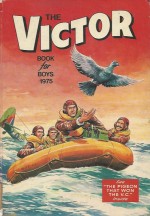
By many and various (DC Thomson)
Retroactively awarded ISBN: 978-0-85116-077-1
If you grew up British anytime after 1960 and read comics you probably cast your eye occasionally – if not indeed fanatically – over DC Thompson’s venerable standby The Victor.
The Dundee based publisher has long been a mainstay of British popular reading and arguably the most influential force in our comics industry. Its strong editorial stance and savvy creativity has been responsible for a huge number of household names over the decades, through newspapers, magazines, books and especially its comics and prose-heavy “story-papers†for Girls and Boys.
That last category – comprising Adventure, Rover, Wizard, Skipper and Hotspur – pretty much-faded out at the end of the 1950s when the readership voted overwhelming with their pocket money in favour of primarily strip-based entertainments…
Cover-dated 25th January The Victor premiered in 1961 as a (mostly) comic strip package, running for 1657 weekly issues until finally folding in November 1992. Absorbing in its time fellow publications Wizard, Hotspur, Scoop, Buddy, Champ and Warlord, it was very much the company’s flagship title for action tales and as such had its own immensely popular run of Christmas Annuals.
The Victor Book for Boys began in 1964 and resulted in thirty stout and stunning hardcover editions over the years. As with the comic iteration the content was based on classic “Boys Own†adventure material encompassing fantasy, war, science fiction, sports stories, period drama and everything in between.
This particular edition opens with historical fact feature ‘The Age of the Ironclad’ and follows up with war comic strip ‘The Pigeon That Won the V.C.’, detailing how avian messenger Winkie was responsible for the rescue of four downed airmen in 1942; pressing on with perennial favourite ‘The Tough of the Track’ illustrated by Peter Sutherland.
Alf Tupper ranked high amongst the company’s grittily realistic pantheon of ordinary stars: a perpetually grimy, soot-stained, incorrigibly working class true sportsman who ran for pride and honour, not gain or prestige.
Here he has a nasty clash with rich, spoiled running rival Nigel Fenton who tries to hit Alf with his sports-car even as his equally vile father is attempting to fix a traction engine competition. When Alf allies with Colonel Fenton‘s most feared opponent, sparks fly, steam explodes and both generations of bad men learn a much deserved lesson…
This is followed by another exploit of the magnificent ‘Morgyn the Mighty’. The “strongest man in the world†first appeared in The Rover in 1928 in prose form, transferred to The Beano in 1938 (drawn by Dudley Watkins) and, after visiting the reborn comics version of Rover, rocked up in The Victor in 1963.
Here the wandering, loincloth-clad wonder man (drawn by Ted Kearnon, perhaps) is in the Himalayas and uncovers the secret of the legendary Yetis, after which ‘The Ruffies and the Tuffies’ (by George Martin and recycled from The Beezer where they were The Hillies and the Billies) comedically continue their frantic feuding before another WWII yarn depicts a plucky Home Guard hero using ‘The Drainpipe Destroyer’ (the formidable Northover Projector) to quash a burglary by Black Marketeers.
Following a general knowledge ‘Quick Quiz’, ‘The Jalopy with a Jinx’ reveals how a young man uses a vintage car to foil a modern jailbreak before ‘Killer Kennedy R.N.’ triumphantly trades his motor torpedo boat for a German bomber after being captured at sea and Queen’s Messenger Peter Hazard runs into a little trouble in modern Afghanistan and has to recover precious papers and treasures before completing his ‘Escape from the Red Assassin’…
‘Night run to Fort Luton’ offers a prose yarn about a motorbike despatch rider in WWII Britain, followed up by sports feature ‘Goal!’, a fact-file on rescue procedures entitled ‘Guardians of the Mountains’ and comedy capers from Michael Barratt in a reprint of ‘Tall Tales from Toad-in-the-Hole’: a Topper revival/reprint featuring a little village cut off from progress since the time of Cromwell and poorly adjusting to modern developments such as the unfortunate bill-poster of this episode…
‘Splashdown to Danger!’ finds a modern British salvage vessel on site when a space capsule plunges into the ocean and quickly embroiled in a sinister scheme by leftover Nazi rocket scientists before ‘The Sea Shall Not Have Them!’ describes contemporary air-sea rescue procedures.
Next up is an example of fabulously engaging, long running comedy adventure ‘The Hammer Man’ superbly illustrated by Richard Terry “Ted†Rawlings. Set in the 15th century the strip detailed the rise of blacksmith Chell Puddock whose services to King Henry V saw the commoner elevated to the knighthood as the most peculiar noble of all time…
Here it’s 1415 and he’s still a commoner on the battlefields of France, but his valiant deeds make him many noble friends as he unhorses a rogue English knight, single-handedly breaches the stubbornly impregnable castle of St. Pol and defeats the terrifying Wolf of Picardy in single combat…
Another light-hearted comedy drama was ‘Fred Kay’s Crazy Railroad’ (art by Josep Marti) which described the exploits of a determined British transport sergeant and his crew of misfits and rejects who constructed a makeshift transport line in Burma in 1944. This time his immediate problem is a load of unstable dynamite a pushy American Colonel wants anywhere but where he is…
‘Gorgeous Gus’ (by Bert Vandeput?) was English aristocrat the Earl of Boote who owned and played for First Division Redburn Rovers. When the team travelled to Buenos Aires for an international fixture, Sportivo’s scurrilous director tricks Gus into a polo match and dislocates his shoulder, thinking that it will keep the Rover’s star player out of the game.
Devious Don Juan has no concept of True Brit grit…
Prose skit ‘Chipper’s Time Machine’ reveals why you should never buy a time/space engine from the back of a market stall and ‘Sports Quiz’ tests your knowledge on a wide variety of subjects before Rawlings turns in a typically robust and rambunctious job dramatising the incredible career of Nova Scotian Negro William Hall V.C. who was born the ‘Son of a Slave’ in 1827 and became one of the Royal Navy’s greatest heroes…
‘The Ruffies and the Tuffies’ then briefly suspend hostilities to appear on a TV show whilst ‘It’s a Funny Old World!’ offers crazy clipping of strange –but-true events before ‘The Flying Cowboy’ joins the British Royal Flying Corps in 1916 to show the Boche how things are done back home on the range…
‘Tall Tales from Toad-in-the-Hole’ sees an aged dotard experience the terrors of modern heating before our learning experience kicks in again with optical shenanigans in ‘Your Eyes Tell you Lies!’ whilst ‘Build a Battle Gun’ offers patterns and instructions for the budding model-maker.
The strip action wraps up with a tale of ‘Kenny Carter’s Kayo Kids’ as the dedicated boxing coach takes under his wing a brace of constantly battling troubled twins who only want to fight each other before the tome steams to close with another spread detailing more amazing vessels from ‘The Age of the Ironclad’.
Divorcing the sheer variety of content and entertainment quality of this book from simple nostalgia may be a healthy exercise but it’s almost impossible. I’m perfectly happy to luxuriously wallow in the potent emotions this annual still stirs. It’s a fabulous thrill-packed read from a magical time and turning those stiffened two-colour pages is always an unmatchable Christmas experience… happily one still relatively easy to find these days.
You should try it…
© DC Thomson & Co., Ltd., 1974.
Batman Storybook Annual

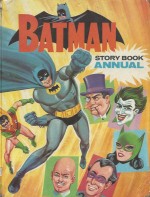
By various and Mick Anglo (World Distributors)
No ISBN
Before American publishers began exporting directly into the UK in 1959 our exposure to their unique brand of fantasy came from licensed reprints. British publishers/printers like Len Miller, Alan Class and others purchased material from the USA – and occasionally Canada – to fill 68-page monochrome anthologies – many of which recycled those same stories for decades.
Less common were the flimsy, strangely coloured pamphlets reprinting the same stuff, produced by Australian outfit K. G. Murray and exported and distributed here in a rather sporadic manner. They also produced sturdily substantial Christmas Annuals which had a huge impact on my earliest years (I strongly suspect my adoration of black-&-white artwork stems from seeing supreme stylists like Curt Swan, Carmine Infantino, Gil Kane and Murphy Anderson uncluttered by cheap, flat colour).
The first Batman Annual came out in 1960, but in the heyday of “Batmania†two separate publishers were releasing hardback Holiday Editions. This delightful oddment comes from just after Batmania ruled the Earth, thanks to the power of the Adam West/Burt Ward Batman TV show. Another publisher had the rights to reprint the current crop of DC comic strips – which bore only superficial resemblance to the TV iteration anyway – but World Distributors secured a license to publish prose books directly based on the screen escapades…
British comics have always fed heavily on other media and as the popularity of television burgeoned during the 1960s – especially children’s shows and cartoons – those shows increasingly became a staple source for the Seasonal Annual market. There would be a profusion of stories and strips targeting not simply readers but young viewers and more and more often the stars would be American not British…
After three seasons (perhaps two and a half would be closer) the overwhelmingly successful Batman TV show ended in March, 1968. It had clocked up 120 episodes and a movie since the US premiere on January 12th, 1966 and triggered a global furore for all things zany and mystery-mannish.
At this time DC, Dell/Gold Key, Marvel and Charlton all had limited overseas licenses – usually in dedicated black-&-white anthologies. Another factor to consider was the traditions of the UK market. American comics had been primarily picture-strip based since the 1930s, but British weeklies had been providing Boy’s and Girl’s “papers†that were prose-based for all that time and longer.
DC Thompson persevered with illustrated text periodicals until well into the 1960s and every British company continued to shave costs by padding comics and annuals with text stories and features well into the 1970s.
Seasonal annuals provided a vital sales peak of the publishing year and a guaranteed promotional push (see Alan Clark’s superb The Children’s Annual for further details). Any comic worth its salt needed a glossy hardback on the shelves over the Christmas period, but they didn’t have to be picture-packed…
Not yet, at least. In future years various outfits would publish DC and Marvel Annuals: mostly full colour reprint strip extravaganzas with a little UK-originated material, but in the 1960s the prose tradition was still worth pursuing – especially if another company had the licences to publish strips but had neglected to secure rights to storybooks and text tales…
Thus this peculiar and delightful novelty: a comfortingly sturdy 96 page parcel of bold illustrations, games, puzzles and prose stories featuring the Dauntless Dynamic Duo in exceedingly British, goggle-box inspired tales of skulduggery and derring-do, flavoured with the OTT wackiness of the TV show at its madcap height.
This was the last of four; released in 1969 by Manchester-based World Distributors. The company was formed by Sidney, John and Alfred Pemberton after WWII and their main business was licensed Annuals; usually released in Autumn for the Christmas trade and ranging over the decades from Doctor Who to Star Trek to Tarzan, as well as choice selections of comics properties like Fantastic Four, Superman and The Phantom. They became World International Ltd in 1981 but changing market conditions put them out of business by the end of the decade.
This entire package – like most of their 1960s offerings – was produced in the cheap and quirky mix of monochrome, dual-hued and weirdly full-coloured pages which made the Christmas books such a bizarrely beloved treat. As for the writers and artists of the material your guess is, sadly, as good as or better than mine, but it was certainly generated by the wonderful Mick Anglo’s publishing/packaging company Gower Studios and therefore offered a delightfully eclectic mix of material far more in keeping with the traditionally perceived interests of British boys than the suited-&-booted masked madness which usually followed in the Caped Crusader’s scalloped wake.
The madcap all-ages mayhem opens with ‘The Archer Hits the Target’ wherein the Caped Crusader escapes an bizarre bowman’s death-trap through a liberal application of “batdope†after which the ‘The Riddler Riddles’ provide a page-full of wicked brainteasers. ‘The Joker Laughs Last’ but still fails in pulling off a million-dollar bank raid and we take a quick break by enjoying some arcane natural history facts in featurette ‘How Odd!’
An invasion of animated umbrellas presages ‘The Penguin’s Biggest Flap’ but once he’s properly thumped a brace of divertissements begins with more gags in ‘The Caped Crusader’s Conundrums’ and ends with speed records quiz ‘Fast, Faster, Fastest’ after which the Gotham Gangbusters scupper a modern buccaneer and leave ‘No Plunder for the Pirate’…
A fact-file on ‘Queer Birds’ then leads into gripping board-game ‘Catch the Joker’ (still got those counters and dice?) whilst a sartorially superior super-crook meets his match when ‘Batman Buttonholes the Gent’ after which the not-so-Dark Knight offers a lecture on natural gimmicks and animal adaptations in ‘Crime Fighters, Please Note’.
‘Bus Ride – by Water’ is a photo-feature on hovercraft and ‘Know your Sports’ tests your knowledge on games before the Bird Bandit bounces back in ‘A Parry for the Penguin’, kidnapping Commissioner Gordon and Chief O’Hara before a second seductive board-game pits the Caped Crimebusters against the Fowl Felon and Mountebank of Mirth who are ‘Cruising for a Bruising’…
‘No Safety in Numbers’ examines conspiracies from Guy Fawkes to the German plot to kill Hitler via the betrayal of Jesse James, whilst ‘Sharpen your Mind’ provides another batch of riddles before we charge back into action as Batman rescues Bruce Wayne‘s Aunt Harriet from a medieval-themed malcontent in ‘A Bleak Outlook for the Black Knight’…
‘A Joke Isn’t a Joke’ offers another board-game and language-skills are tested in ‘Every Kind of Bat’ and crossword ‘Words Up and Down’ before a deadly card-based cad hits town and ‘Batman Outshines the Ace’ after which another photo-spread details the job of divers in ‘Splash! It’s the Police’ and the underwater theme concludes with ‘The Penguin’s Fishy Facts’…
‘Wiping the Smile from the Smiler’s Face’ finds Batman battling a bomb-planting maniac after which general knowledge is assessed in ‘Battle of Wits’ and the Dynamic Duo become ‘Big Game for the Catwoman’ (and her sultry Cat-Girls!) before we all suffer the corny pangs of wit from ‘The Joker Jokes’…
This quirky fun-fest then concludes on a high note (A-flat, I suspect) as ‘The Minstrel Plays it Hot’ but still falters before the keen wits and fast fists of Batman and Robin…
Odd and truly daft, this titanic tome is probably only of interest to comics completists and incurable nostalgics, but I’ll bet there are more of us than anybody suspects out there and what’s wrong with a little sentiment-soaked reminiscing anyway?
© MCMLXIX by National Periodical Publications Inc. All rights reserved throughout the world.

